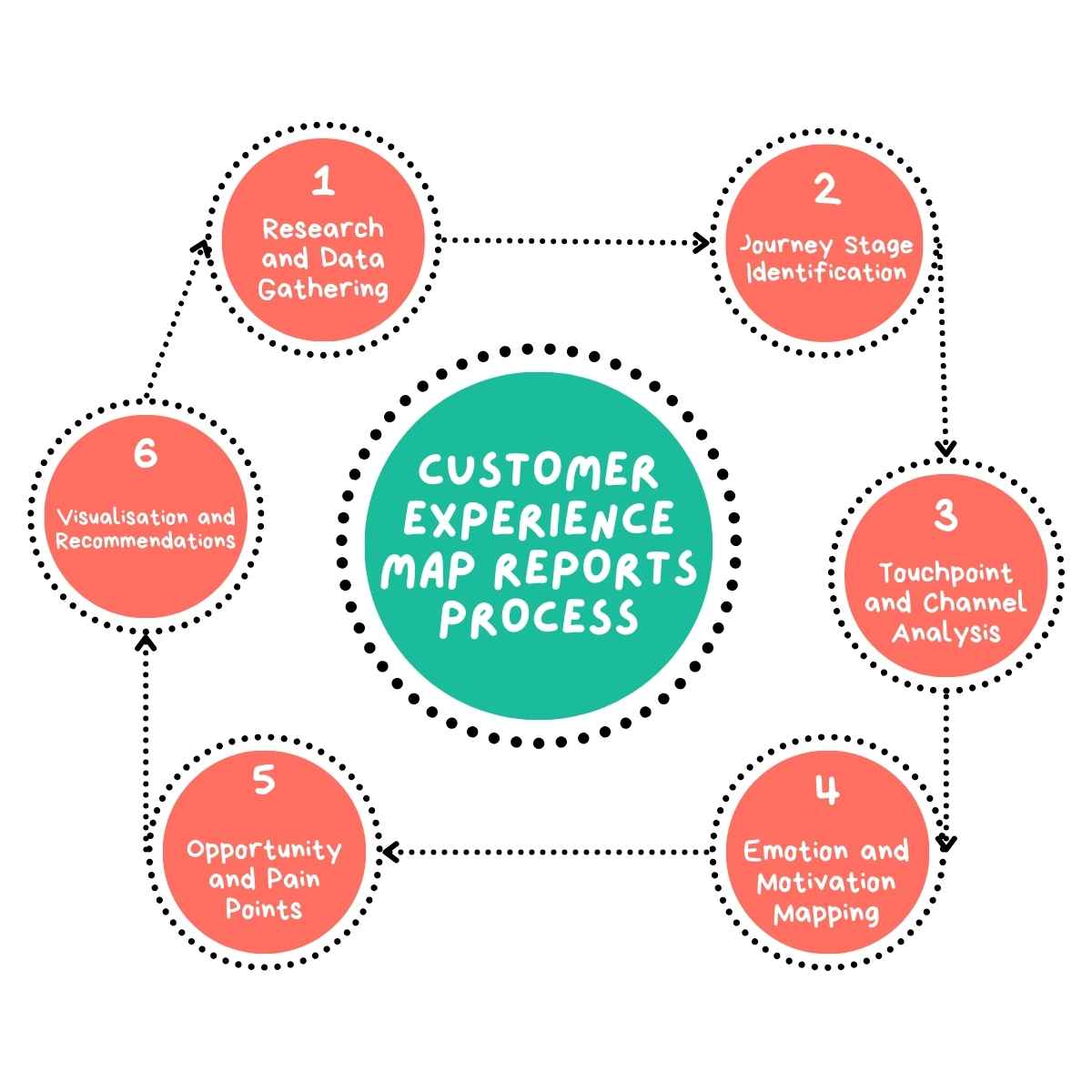I create detailed reports that visualise and analyse the entire customer journey. My approach combines data-driven insights with qualitative research to provide a comprehensive view of user interactions across all touchpoints.
What Are Customer Experience Map Reports?
CX map reports are strategic tools that document the end-to-end journey customers take when interacting with a product, service, or brand. These reports visualise the process from initial awareness through to post-purchase support, highlighting pain points and opportunities for improvement.
Journey Overview:
Breakdown of the customer journey into distinct phases
User Experience:
Behavior patterns and emotional responses.
Pain Points
Areas of friction and opportunities for improvement.
Analysis
Key metrics and success indicators per stage.

Why Customer Experience Map Reporting Matter
✓ ROI-Driven Decisions: Companies that use journey mapping see measurable improvements in marketing and product outcomes by identifying key customer pain points (Forrester, 2023)
✓ Customer Retention: Effective journey mapping helps organisations understand customer behavior and pain points, improving satisfaction and reducing churn (McKinsey & Company, 2023)
✓ Cross-Team Alignment: Teams using customer journey maps improve communication and align strategic decisions with actual customer needs (Nielsen Norman Group, 2023)
According to a 2023 survey by Forrester, only 22% of companies consider themselves “CX leaders,” indicating that many organisations still have significant room for improvement in their customer experience strategies (Forrester, 2023)
Benefits My CX Map Reporting
My Customer Experience Map Reports Process

Research and Data Gathering: I collect comprehensive data on customer interactions across all touchpoints.
Journey Stage Identification: I define the key stages of the customer journey, from initial awareness through to post-purchase support.
Touchpoint and Channel Analysis: I identify and analyse all customer touchpoints across various channels (digital, physical, human).
Emotion and Motivation Mapping: I map customer emotions, thoughts, and motivations throughout their journey.
Opportunity and Pain Point Identification: I analyse the journey to identify key pain points where customers face friction or frustration.
Visualisation and Recommendations: I create a visually compelling customer experience map that clearly illustrates the entire journey.
Why Choose UserFirst UX for Your Customer Experience Mapping Needs?
Expert Analysis
Benefit from my deep expertise in customer experience mapping to better understand and enhance your users’ journey.
Actionable Insights
Gain actionable insights into pain points and opportunities across the user journey.
Tailored Approach
Each customer experience map is designed specifically for your product.
Comprehensive Reports
Receive thorough, easy-to-read report that visualises the entire customer journey and highlight areas for improvement.
Ready to Visualise Your Customer’s Journey?
Whether you’re looking to improve an existing service or develop a new product, a comprehensive customer experience map is essential for success. Contact me today to discuss how my CX map reports can help optimise your customer experience and drive business growth.
